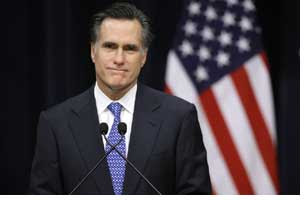His name was Charles Sheldon – and he is one of the most influential preachers in American history.
Don’t be surprised if you haven’t heard of him. Until I started looking into this, I hadn’t heard of him either.
In 1896, Sheldon published a novel called In His Steps, about a small Kansas town that decided to try and live by a simple credo … summed up in four short words. What Would Jesus Do? Well, the rest is history. Sheldon’s book went on to be published in 21 languages around the world, and the central idea of it became one of the most familiar slogans in popular Christianity. You find it – or its abbreviation, WWJD – on tee shirts, bumper stickers and wristbands.
And why not? As Catholic Christians, we should ask ourselves at important moments of choosing What Would Jesus Do?
 But on this solemnity…when our focus is His mother…I’d like to pose another question. WWMD? What Would Mary Do?
But on this solemnity…when our focus is His mother…I’d like to pose another question. WWMD? What Would Mary Do?
She was the first disciple – the model for us all – and in her life and in her choices we can gain insight that can help guide our lives, and our choices…beginning with today’s gospel.
When the angel Gabriel arrives in Nazareth, and tells Mary that she is about to become the mother of God … what does Mary do? She is young, probably 12 or 13. She’s not married, doesn’t appear to have a lot of money. What would most teenage girls do under those circumstances? Does Mary say … “this really isn’t a good time for me, can you get back to me in 10 years?” Does she say, “That’s impossible, I’ve got the best birth control on earth, I’m a virgin?” Does she run away?
No. She talks to the angel. And she realizes she needs to place her life in God’s hands. “Behold. I am the handmaid of the Lord. May it be done to me according to your word.”
A generation later, her Son would echo that idea in the most famous prayer ever composed: “Thy will be done.” Clearly, he was his mother’s son.
We are her children, too — and there are lessons there for us, as well.
When the life we have planned suddenly takes a turn we didn’t expect…when the job falls through or the loan is rejected or the pregnancy test doesn’t turn out the way we’d hoped…we might wonder: what would Mary do? WWMD?
That’s a good question to ask ourselves, especially in these troubled and confusing times. Mary herself lived in troubled and confusing times – in an occupied country, ruled by a ruthless king.
But she faced an uncertain future with certain trust: “May it be done to me according to your word.”
A lot of people, I know, think THAT moment, when she agreed to be the mother of Jesus, was the “Immaculate Conception.” No. This feast is all about Mary — the day we mark HER Immaculate Conception, conceived in HER mother’s womb, free of original sin. Exactly nine months from now, September 8th, we will celebrate the birthday of the Blessed Mother.
But this is where it all began. And it is extraordinarily important. Because this is the act of creation that made our redemption possible.
And, significantly: this is how Mary wanted to be known.
Starting today, the church embarks on a year-long celebration of the 150th anniversary of Mary’s apparition in Lourdes. Most of us know the stories surrounding those appearances, and the healing waters that, to this day, give so many people hope.
In 1858, when the authorities began investigating what was happening in that French village, they asked Bernadette what The Lady she’d seen had said to her. And Bernadette replied, “She said, ‘I am the Immaculate Conception.’”
The church officials were stunned.
This was a dogma that the Church had officially proclaimed just four years earlier. And they knew there was no way that Bernadette could have heard of it, let alone understood what it meant. Yet that was how the Mother of God announced herself – her proof to a disbelieving world.
Mary has had many other titles through the centuries. Brooklyn and Queens are full of churches that bear her name, under different titles — including, of course, this one. But “Our Lady of the Immaculate Conception” has a special place. It is the title that marks the Blessed Mother as patroness of both our diocese, and our country. And what could be more meaningful? It is a title of great promise. It signals the very start of God’s plan for our salvation. It is – literally – pregnant with possibility. And so, I think, is this feast.
This solemnity marks the day when the impossible became possible, when the human chain of sin was finally broken. A woman was conceived without sin, to bring into the world its savior. That moment — The Immaculate Conception — was the beginning of the greatest mystery in human history.
Every day, we are invited to share in that mystery – to believe, to trust, to surrender ourselves somehow to God’s will. It’s a daunting invitation. But when God extends that invitation, we should never forget this: Mary can show us the way.
In moments of doubt and uncertainty…when it seems like all the choices in the world are wrong, and every option is bad…we can turn to Our Lady of The Immaculate Conception, and ask ourselves:
WWMD? “What would Mary do?”
Image: “Mary, the Mother of God” by Louis Glanzman

